# Set up a test case
Setting up a test case consists of four basic steps:
- Step 1: Mock a trigger
- Step 2: Mock steps
- Step 3: Add checks
- Step 4: Validate the test case
LIMITS
Workato restricts test case sizes to 10MB, and cannot run test cases that exceed this limit.
# Step 1: Mock a trigger
You must mock the recipe trigger to successfully run a test case.
To mock a trigger:
Click the trigger step of your recipe.
Decide how you plan to mock the trigger. You can use data from a previous job, or type in your own JSON.
If you decide to use data from a previous job:
Select Pick data from a prior job.
Select a job from the list of previous jobs displayed in the wizard.
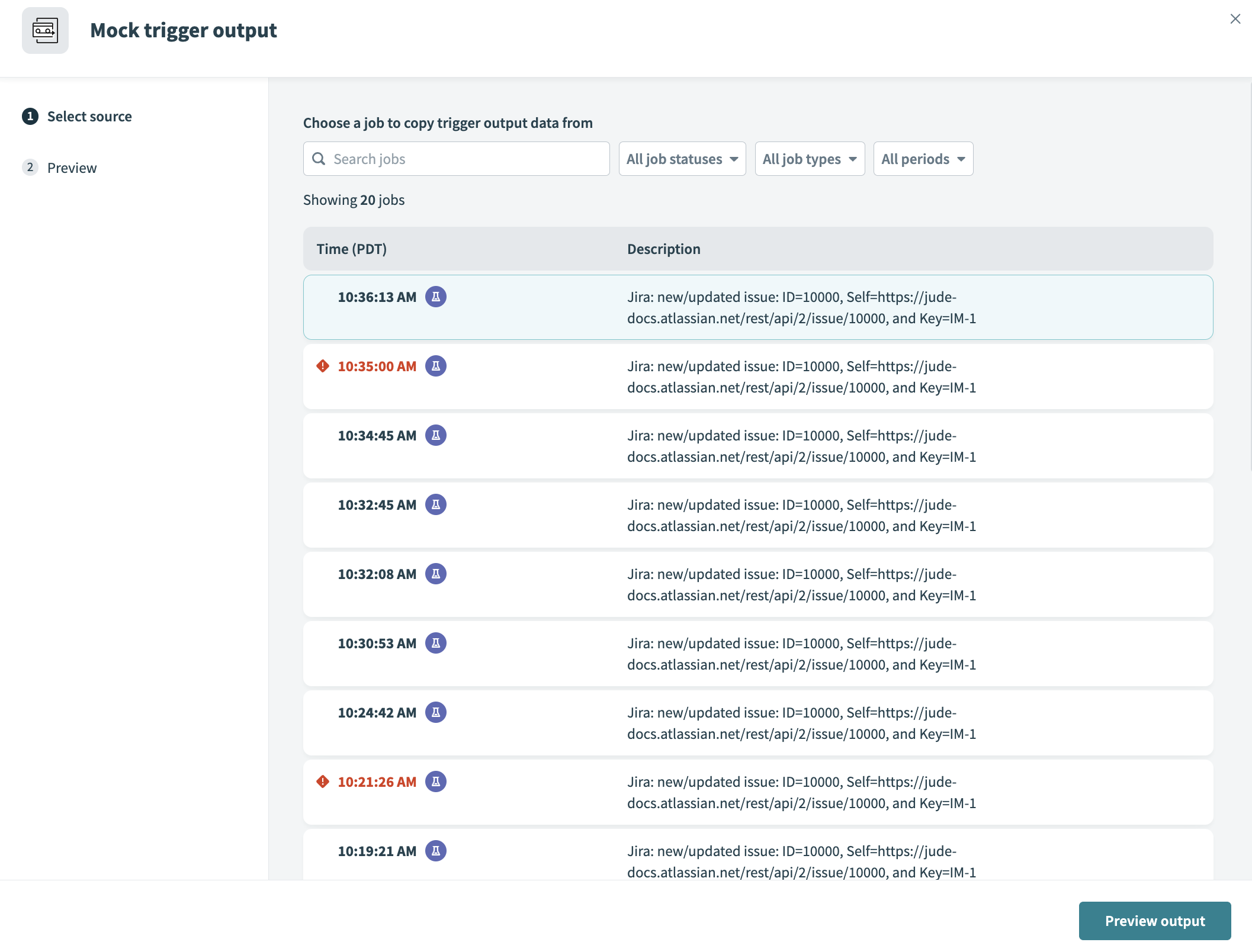 Select a previous job
Select a previous jobClick Preview output.
Click Copy to mock trigger.
 Preview output
Preview output
Alternatively, select Type in your own JSON to type in your own JSON.
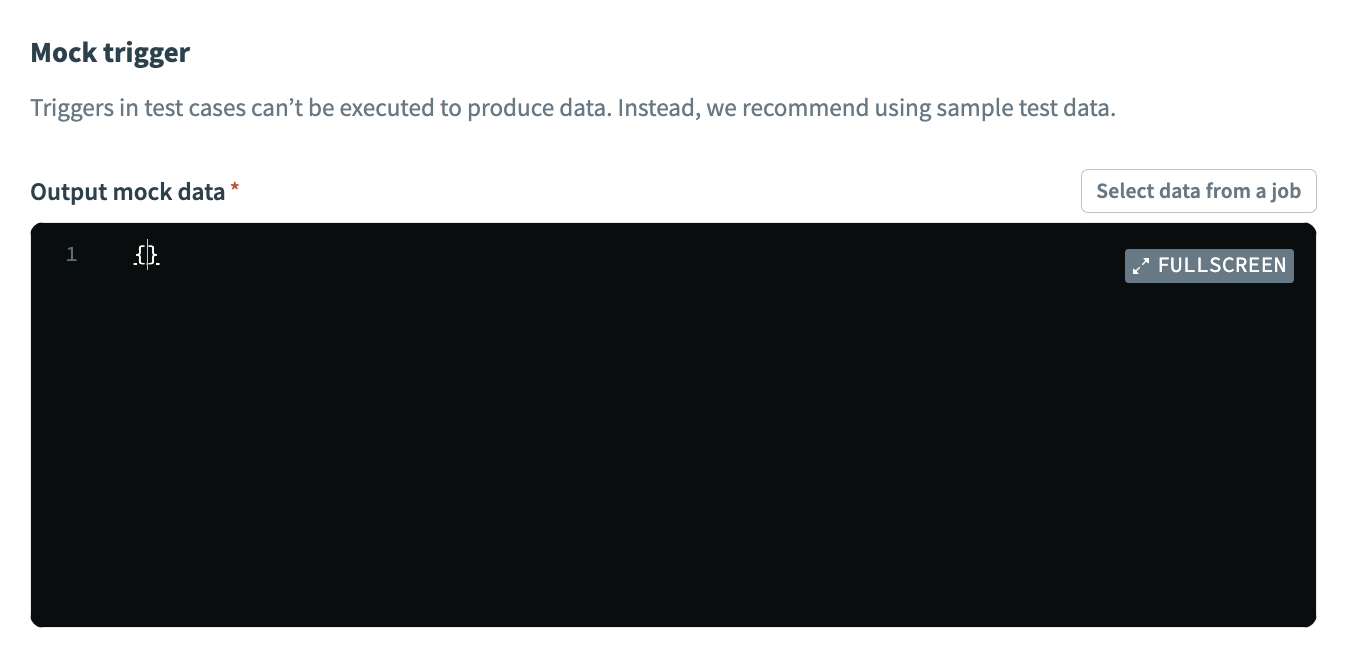 Type in your own JSON
Type in your own JSON
# Step 2: Mock steps
If you do not want Workato to use your external apps data in your tests, you can use mock data instead. In this situation, you must use mock data to mock all of the steps that involve interaction with third-party applications.
For example, if your recipe involves searching for tickets in Zendesk or updating a ticket in Jira, you can mock these steps to avoid using the data in your Zendesk or Jira instances.
# What types of mocking is available in Test Automation
Test Automation allows you to mock step data output and mock errors.
# Mock step data output
When you mock step data output, the following actions occur:
- Workato evaluates all input fields.
- Workato does NOT hit external app data or send HTTP requests.
- Workato uses the mock data you provide as a step output.
# Mock to throw an error
When used, the following actions occur:
- Workato evaluates all input fields.
- Workato does NOT hit external app data or send HTTP requests.
- Workato simulates a recipe error with the error name and description you provide.
- If the recipe you are testing does not have a MONITOR/ON ERROR wrapper for a step, the recipe fails with an error.
- Otherwise, the following occurs:
- Recipe execution jumps to the ON ERROR section of the recipe.
# Steps that must be mocked
To use Test Automation, you must mock the following steps.
- Trigger
- Workbot actions
- All long or multistep actions
- Functions
# Steps that can't be mocked
Test Automation does not support mocking the following types of steps.
- Conditions and loops
- If
- If else
- Repeat action
- Stop job
- Monitor and ON ERROR steps
- Return action
- Certain Workato utility connectors
- All Variables by Workato actions
- All Lists by Workato actions
# How to mock a step
Select a step you plan to mock.
Decide how to mock the step. Like when you mock a trigger, choose between using a prior job as the source data or entering your own JSON.
# Step 3: Add checks
To add a check:
Choose a step.
Click Create check.
In the Type field, select the check you plan to perform on this step from the following options:
Data check
Validate if step input or output data works under the conditions you specify.
Step failure check
Verify if the step throws an error. If the recipe job fails and all steps with errors pass this check, the test case still passes.
By default, Test Automation automatically creates a data check with the following default settings:
- Check data: Step output
- Check condition: Equals
- Check value:
{}
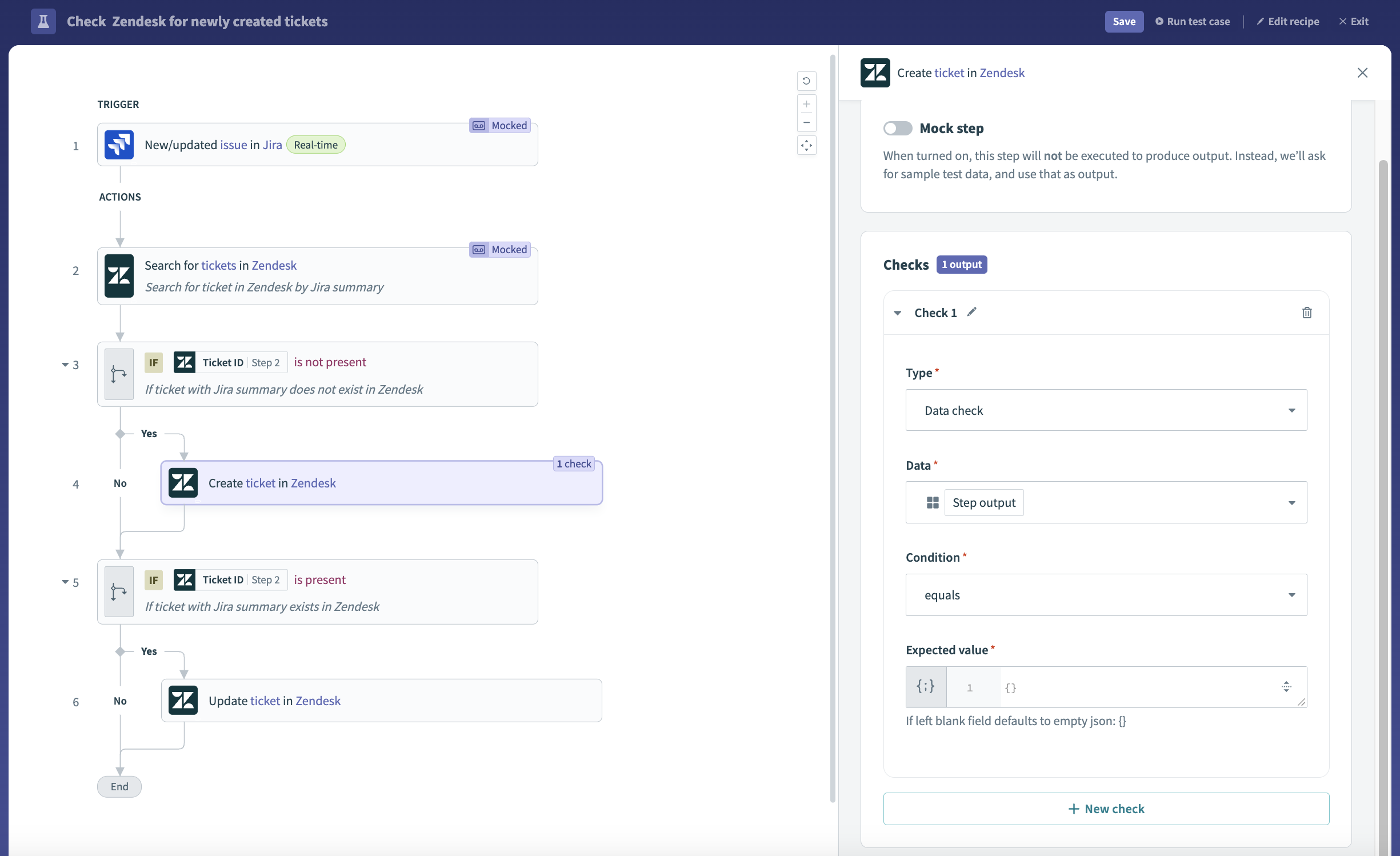 Create a check
Create a check
# Available checks
Test Automation supports two basic types of checks: data checks and step failure checks.
# Data checks:
Validate if step input and output data work under the conditions you specify.
The following is a list of data checks and their corresponding conditions:
Step input (JSON object)
- Available condition(s):
- Equals
Step output (JSON object)
- Available condition(s):
- Equals
Step output (fields)
- Available condition(s):
- Equals
- Contains
- Starts with
- Ends with
- Doesn't equal
- Doesn't contain
- Doesn't start with
- Doesn't end with
- Is present
- Is not present
# Step failure check:
The step failure check verifies if the step throws an error. If the recipe job fails and all steps with errors pass this check, the test case will still pass. This type of check is useful in scenarios where you plan to test negative scenarios, wherein you deliberately introduce erroneous data or conditions that cause the recipe to stop with failure.
Test Automation also gives you the option to set up your test case to check for specific error details by configuring the following fields:
Error type
Provide an error type only if you want specific errors to pass the test.
Error message
Provide an error message only if you want specific error messages to pass the test.
# Number of checks
You can add as many checks as you need for each step.
# Naming checks
You can name your checks to differentiate them from other checks.
Checks for the same step cannot have duplicate names.
# Step 4: Validate test case
When you save a test case, Workato validates the test case.
To save your changes, click Save.
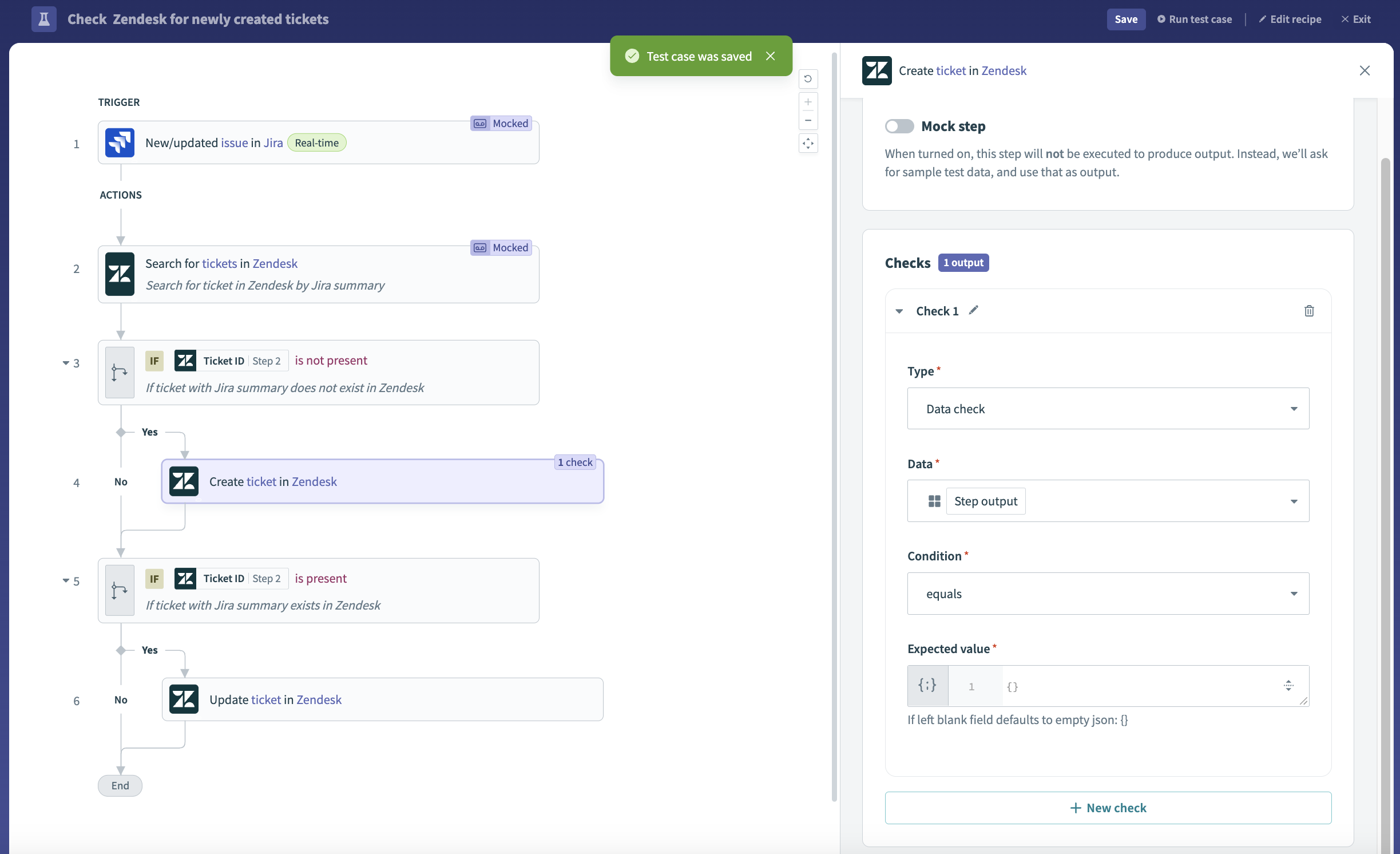 Save a test case
Save a test case
# Errors
The following errors prevent you from saving a test case.
Step not mocked
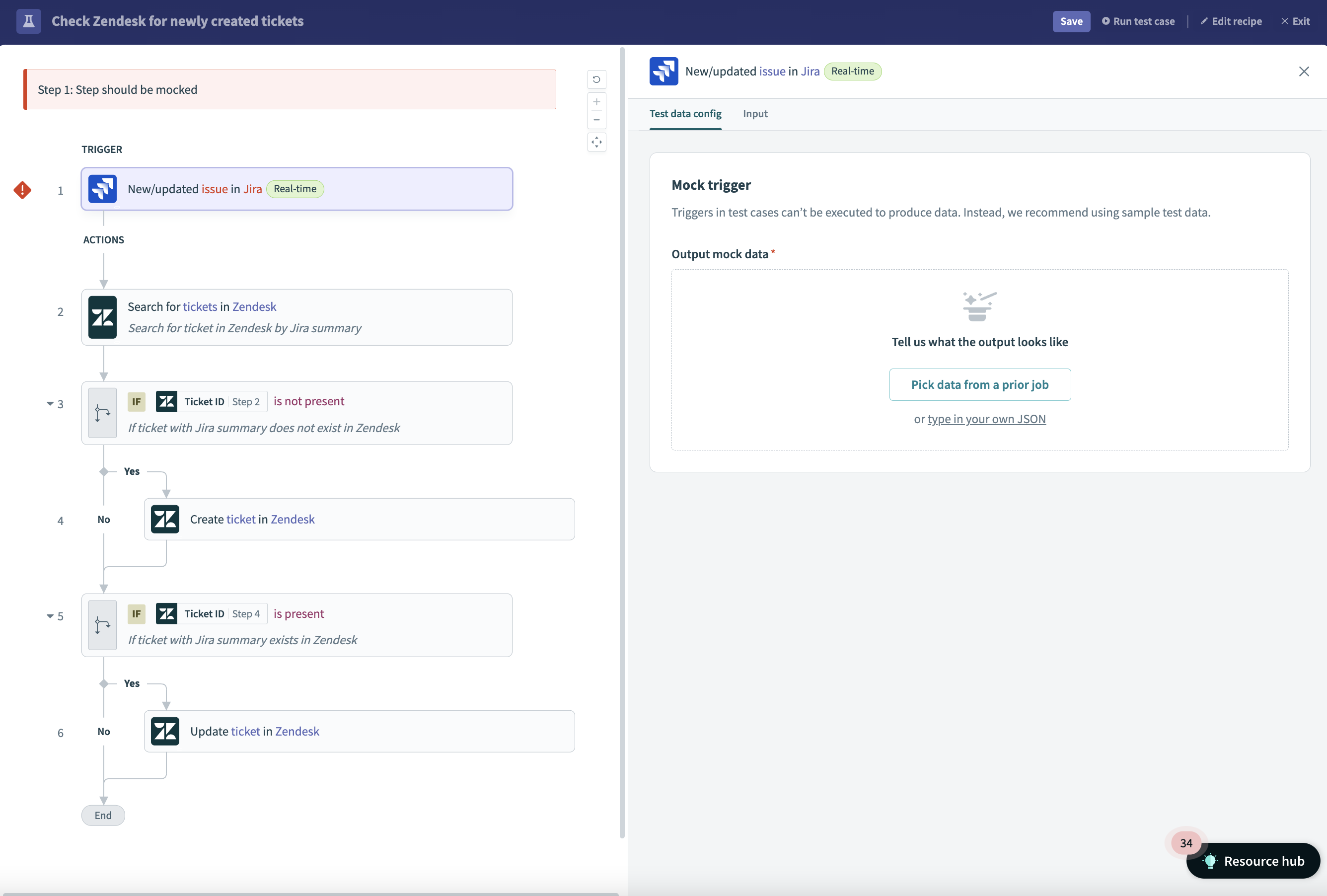 You must mock the trigger step
You must mock the trigger step
Mock has invalid JSON document
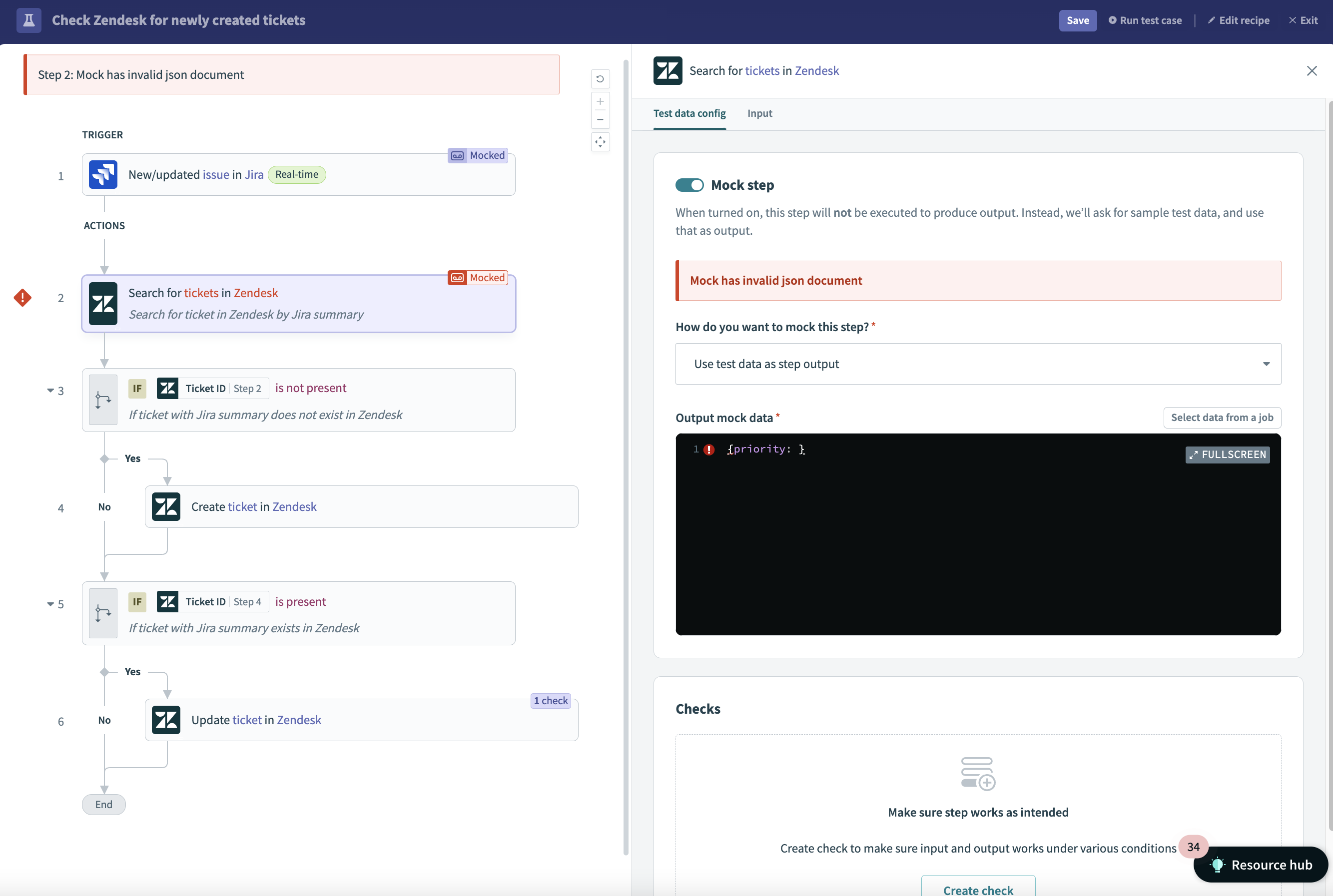 Invalid JSON in mocked step
Invalid JSON in mocked step
Check has invalid JSON document
 Invalid JSON in step with checks
Invalid JSON in step with checks
Recipe was updated
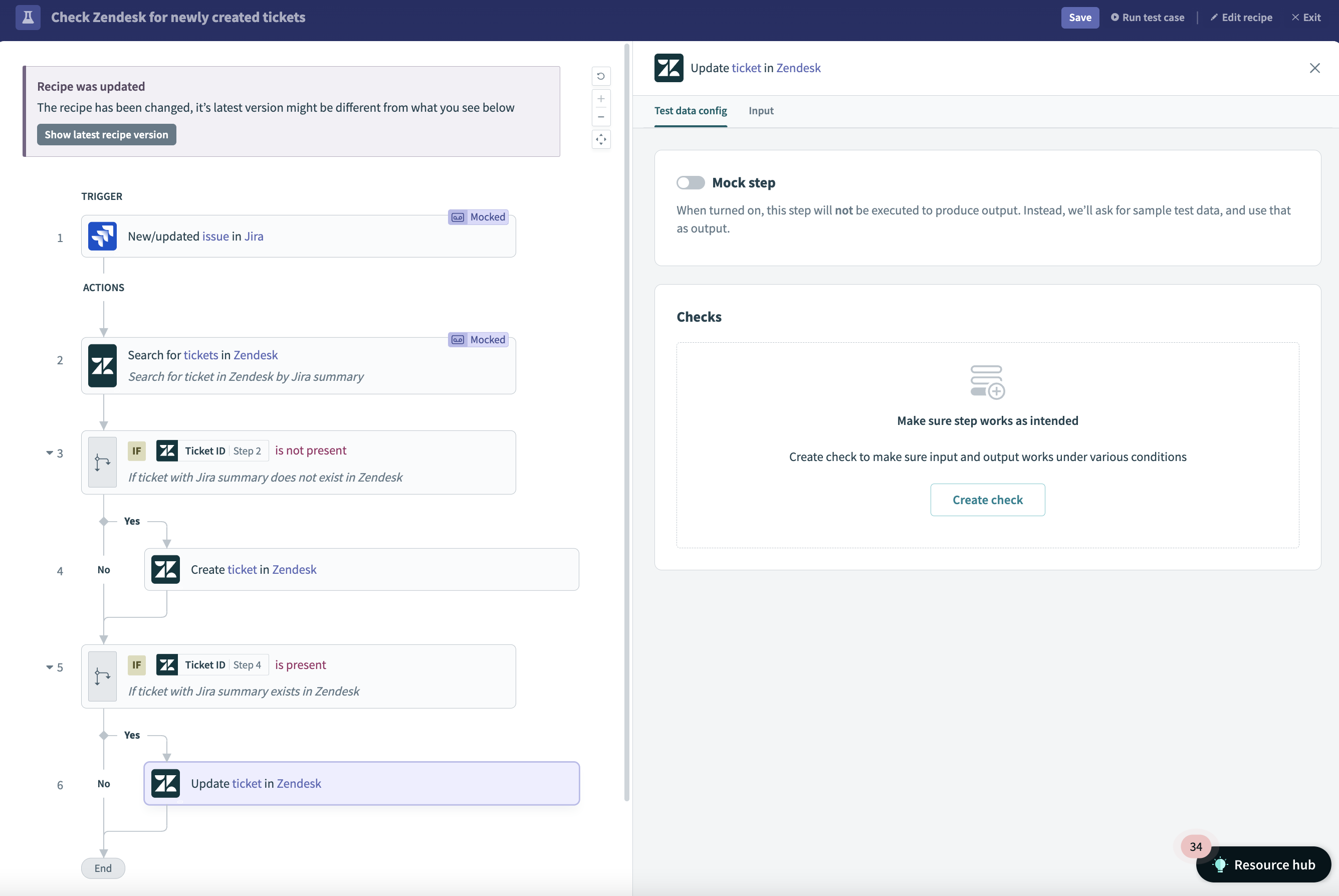 _
_
FURTHER READING
Last updated: 7/28/2025, 6:42:07 PM